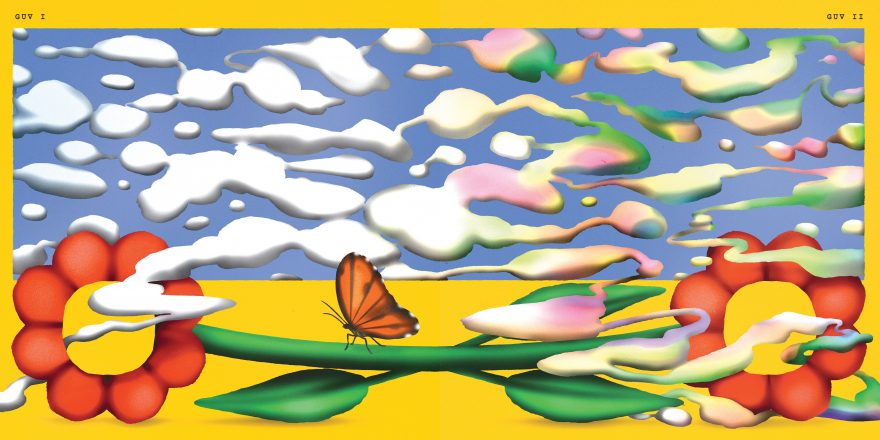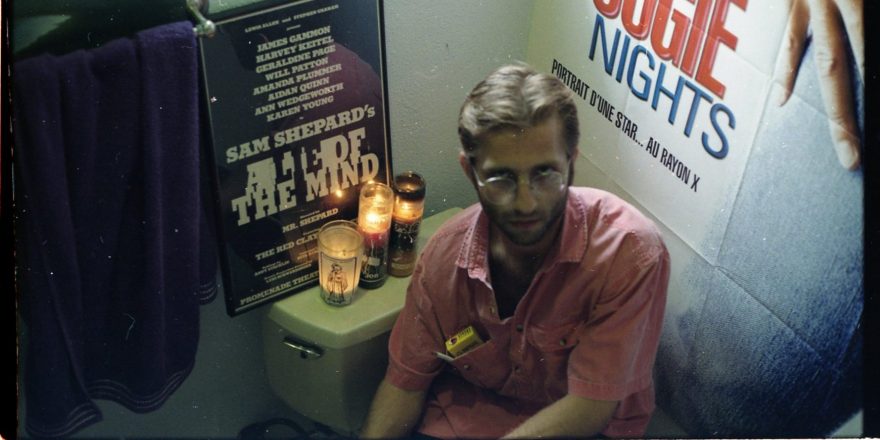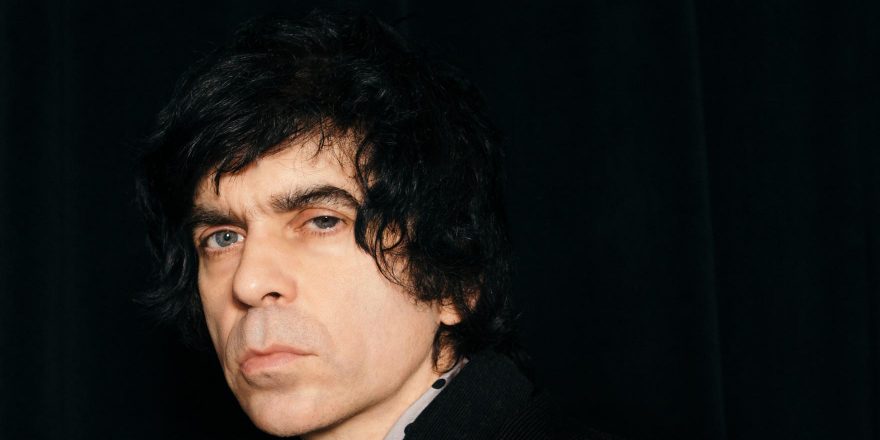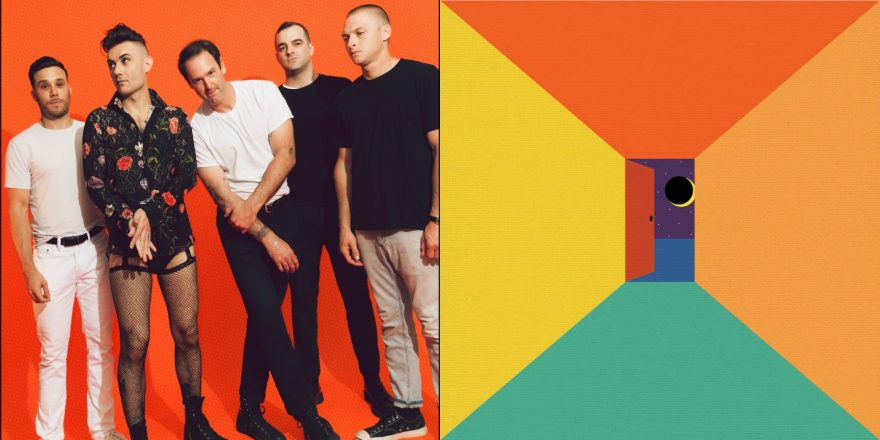On August 2, 2019, Run For Cover Recordings and Maximum Exposure released GUV I, the first volume of a double LP by Young Guv to be compiled at a later date. GUV II is scheduled for release sometime in October, 2019. This is the third Young Guv full length that I have co-produced with Guv in the span of four years.
Creating and releasing a rock & roll record in 2019 is a complicated endeavour. Between instant access to the history of recorded music, a seemingly unlimited range of equipment at your fingertips and a recently renovated digital ecosystem for sharing, promoting, and listening to music, you are constantly confronted with an exhausting array of choices and possibilities. Somehow, over the course of the past year, we made it through this tyranny of possibilities with batch of recordings that, in my opinion, are the finest crafted by Young Guv, henceforth to be referred to simply as “Guv,” to date.
I invited Guv to discuss the process of making this record to augment my own thoughts on the topic. Here are some ideas, strategies and musings on the process of making a rock & roll album at the end of the 2010’s.
Working From Home (Wherever That May Be)
For those of us who depend on a healthy relationship with their creativity for their well-being and pay checks, it is important to ensure we’re able to effectively receive and process the constant flow of messages, emotions, symbols, and ideas that emanate from within and without. For touring musicians, having a base where you can lay out your belongings, stick to a schedule, and unwind can help grease the palms of those bouncers that guard the doorways to inspiration in our minds.
It is therefore essential to impose order on the chaos that is the life of an artist. Guv accomplished this through a change in surroundings: He left Toronto in the midst of a violent summer heatwave in 2018 to retreat to an air conditioned sublet in Brooklyn, where he spent hours of solitude crafting the majority of the songs that make up the GUV LP.
“Sonically, I’ll always be attracted to homemade music,” said Guv, who found solace in songwriting while mired in a chaotic whirlwind of touring, disconnecting from a long-term partner and moving cities. “I often feel unsettled mentally. Writing these songs last summer was my way of trying to find something that felt still and calm at the center of myself.”
By leaving the familiar chaos of his hometown, Guv was able to create new contexts for his creativity. For Guv, songwriting acted as a way to empty himself while imposing a structure to his days by allotting time for music making, daydreaming, and writing. By doing so in an unfamiliar environment with new inspirations at every turn, he was able create new cycles for himself that were more conducive to an outpour of ideas and emotions than his old, familiar environment would allow. The constant absorption and processing that came with the unfamiliar ensured that these new forms of inspiration came easily and steadily enough to warrant a double LP.
Demoitis
As the summer progressed, the songs started stacking up, some in the form of phone memos, others as fully fledged demos, with more still remaining in Guv’s head. Eventually, fellow songwriter/Guv live band guitarist James Matthew VII and I started to show up at his place to come up with more riffs, words, and ideas to expand on Guv’s demos.
I asked Guv to ruminate on the role that demos played on the creation of this album. His first response was short and to the point: “Demoitis is very real.”
If there was one major roadblock that we anticipated while making this record, it was Demoitis.
What’s Demoitis?
The advent of home recording technology has created circumstances where it is possible and commonplace for a musician to record their ideas as they develop in real-time. This produces fully developed musical sketches that can later be analyzed, enjoyed and/or agonized over in equal measures.
But what happens when you take these demos to a recording studio to “properly” record them? The effect can be akin to when the friends that you’ve spent so much time with start looking and acting drastically different. The epidemic of disenchantment related to the difficulty of accepting new forms of the familiar is often referred to as DEMOITIS. Nearly anyone who records music has been punctured and deflated by the curve of its fang.
As August faded into September, Guv’s Brooklyn sublet and a fruitful summer of songwriting approached their final days. We were left with a Dropbox folder full of more than 70 ideas; much listening and plotting ensued as we made our way through the next steps in the process. Be it through earbuds on treadmills, in cars driving around the city at night with friends, on expensive studio monitors, or through iPhone speakers in a park, Guv and I listened these demos to death. By the end of October, we had come up with a list of 17 songs that we felt would make for a solid record. With studio time at Palace Sound in Toronto booked for the following month, we proceeded to listen to the demos even more, expanding each track while developing a plan of attack for our arrival in the studio. Needless to say, we fell victim to Demoitis as we became attached to these demos. We knew moving away from them was going to be difficult.
Having nearly 30 years of experience producing records between the two of us, we knew what we were in for. “I think, at this point, every musician knows that their demos will almost always feel and sound better than any successive recording of the same song,” says Guv, adding that “spending a lot of time in studios trying to re-create the energy captured in first takes is usually futile.” So rather than skulking in the shadows of fear and self-doubt, we decided from the get-go to let the potent venom of demoitis rush through our veins, and became one with beast.
We achieved this by using multitrack demos that already existed as the basis for the upcoming recording sessions, rather than starting from scratch and trying to recreate or “better” them. This meant conceding to the fact that demos contain an inimitable, immediate beauty. This intimate, childlike quality is also inherent in much our favorite music.
Our job as record producers became about preserving as much of the essence of the demos as possible. We recorded this album with legendary Toronto engineer Steve Chahley, someone we have traversed this trail with many times before. By letting the energy of the demos dictate the production of the record, rather than any “industry standards” or preconceived notions we may have, we were able to create a record that felt organic, modern, fresh, and varied.
If a demo felt amazing, but had a bad guitar sound, we would keep all of the older elements in the song except the guitars, and re-record a different guitar through a different amplifier and improve upon what already existed. If the drums on a demo felt to “loopy” or midi-like, we would ask our friend Junkyard Jesse to play something groovier at Palace to replace the drum track. By changing our mindset when it came to Demoitis and utilizing modern recording technology, we were able to find the sweet spot between the homespun beauty of Guv’s demos and the refined, professional polish of modern studio recordings.
Mixdowns, Timelines, and Gramfeeds
As our 14 days in the studio came to an end, we were left with 17 multitrack recording sessions to sift through, consider, and mix. Around this point, the overarching concept for the record started to become clear: We were working on a double album of contemporary guitar music that takes its sonic cues from a kaleidoscopic variety of pop music from the past 50 years. The blending of audio fidelities, recording techniques, and song structures that compose this record’s sonic makeup points fingers towards many things that came before it, but as a whole create something that could have only been made in this era.
Instead of fretting over the potentially disjointed “patchwork” nature of how this record was constructed, we embraced the variances between all of the songs and sounds. Our next goal was to mix the record in a way that simultaneously showcased each song’s unique sonic qualities and tied everything together as much as possible. In order to do this, we split mixing duties up between myself, Steve, and a few other mixing engineers while also relying heavily on our mastering engineer Phil DiMetro to make the songs live in harmony with one another.
I asked Guv if he took the digital music landscape into consideration while making this record, as well as how things like social media and streaming services may have affected his decision making: “No, not at all” he replied, “I only think of social media when we start thinking about graphics and video, but not even really then. I just have a certain standard and aesthetic in mind for how I want the album to feel visually, and that does not get dictated or influenced by any app or platform. Regarding social media and its role in promoting music, something like Instagram is definitely useful, but it’s not a focus for me, I just have a foolish addiction to it. I think that if that stuff is on your mind while creating, you are poisoning yourself.”
Once the album was mixed, there was still no release plan in place. It wasn’t until January 2019, when Guv sent the album via Instagram DM to Boston label Run For Cover, that a clear picture of how this record was going to be released began to take shape.
Around this time we decided upon which directions to explore with regards to visually representing the album. Ben reached out to friends and trusted collaborators Kevin Fitz-Henry, Braulio Amado, Tristan C.M., and Danielle Nemet to work on album art, videos, merchandise and promotional materials. It was also around this time that Run For Cover and Guv made the decision to split the release of the album up into the two halves.
When I asked him about this decision, Guv explained that “the album was originally intended to be a double album with 17-20 songs, but it was Run For Cover who suggested splitting it up.” He goes on to explain: “They felt that for and relatively unknown artist like myself, unloading a double record on the press and public might be a bit much, and things may have gotten lost. I was open to the idea, and we flew with it. Working with RFC has been amazing, I’m very grateful for their interest and vision”.
Splitting the album up into two parts meant that we could now push six to eight singles, rather than three to four. For an album that feels almost like a compilation or playlist, this was appealing to us, as it meant we would also have more opportunities to showcase the visual side of this project through graphic design, photography, and video.
Trends die and technologies transmute at the merciless hands of human creativity. From the moment the ideas for these songs started flow into Guv’s head, the music called the shots; the music told us how it wanted to sound, it gave us directions on how to bring it to life, and it eventually told us how to organize and share it with the world. It was our job to listen and follow. In retrospect, this album taught us some important lessons. It constantly reminded us to pay close attention to what inspiration is telling us, to place trust in the music that we make, and to live in accordance with our art.
Part two of the double LP series, GUV II, will be released October 25 via Run for Cover Records.






